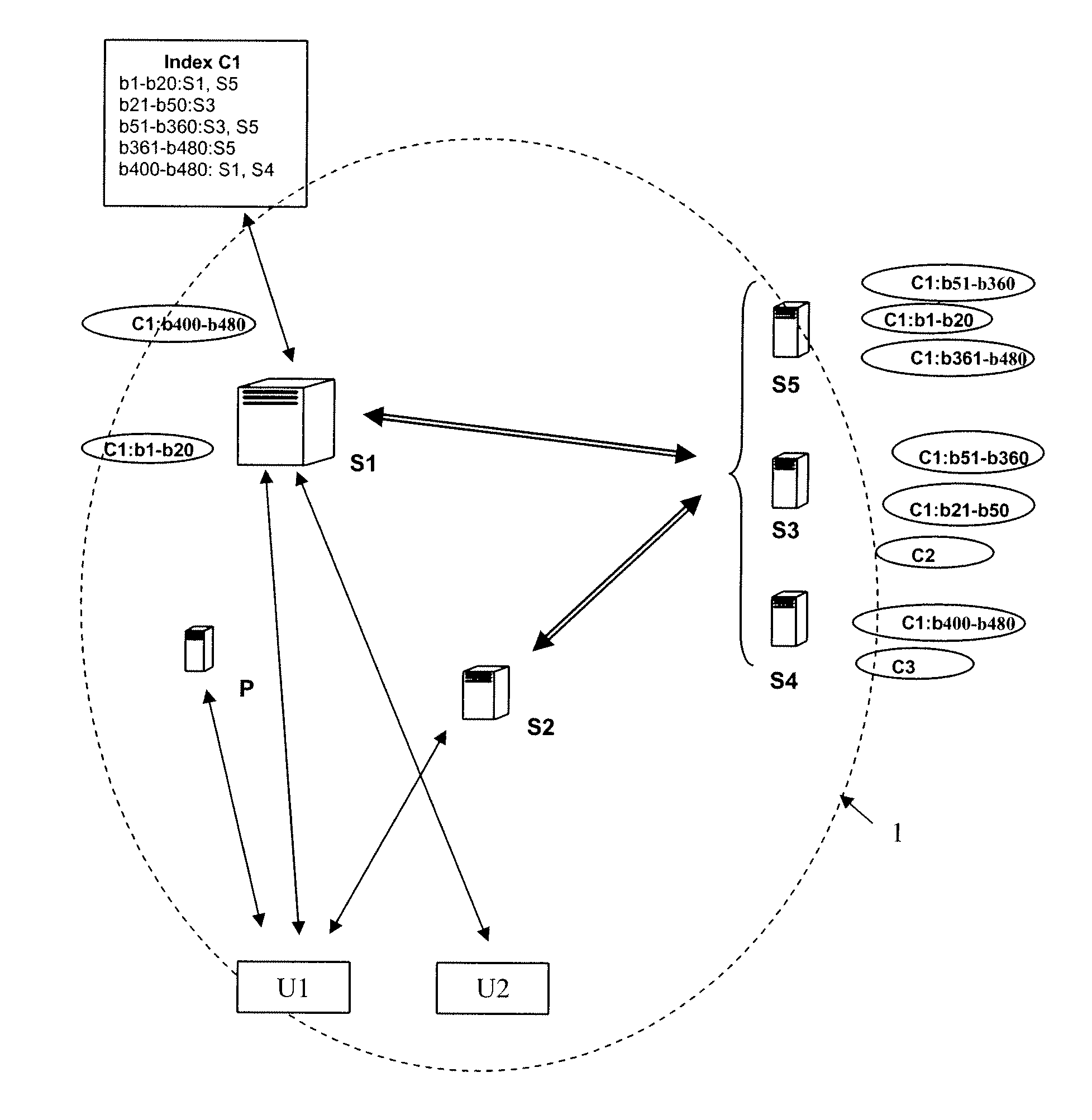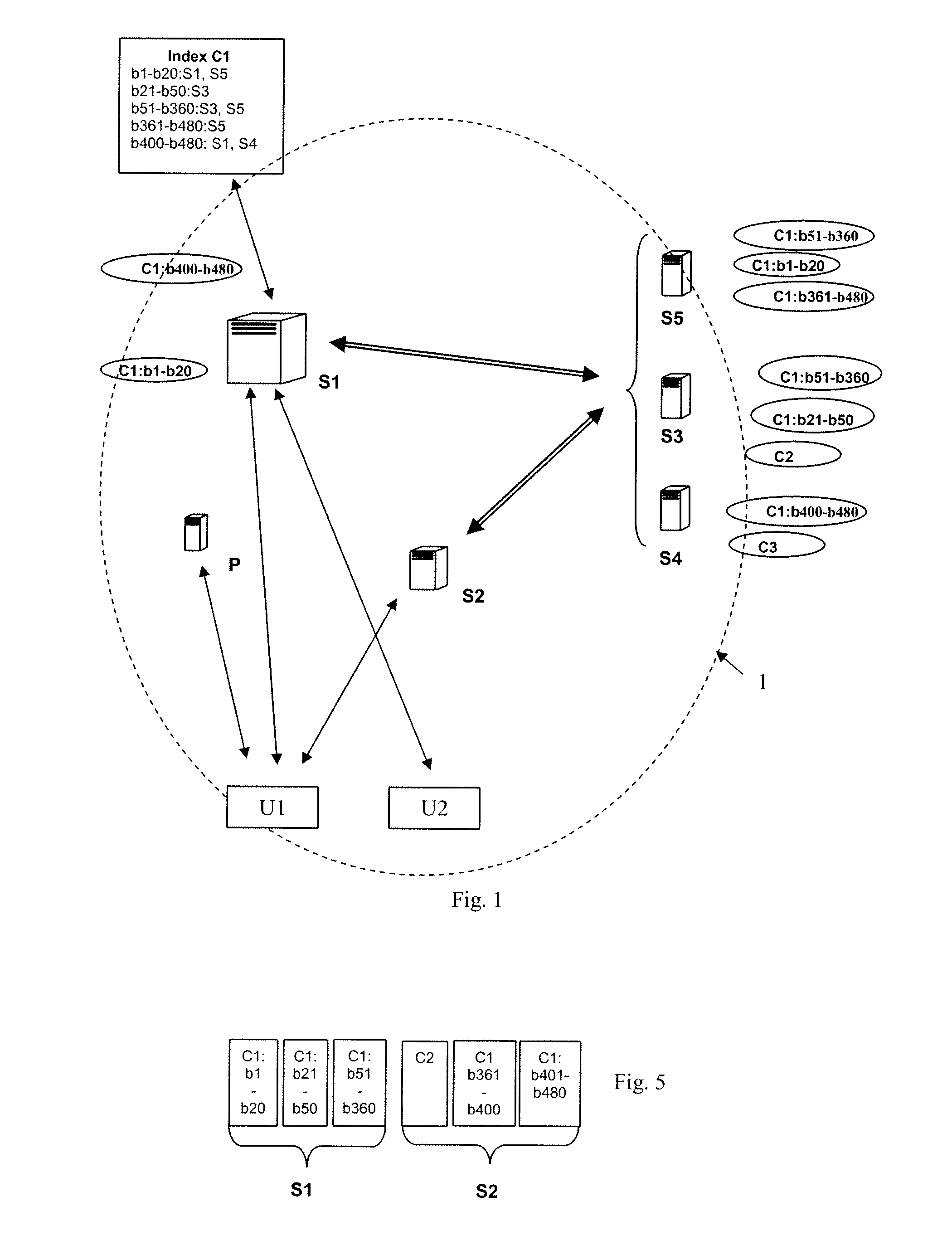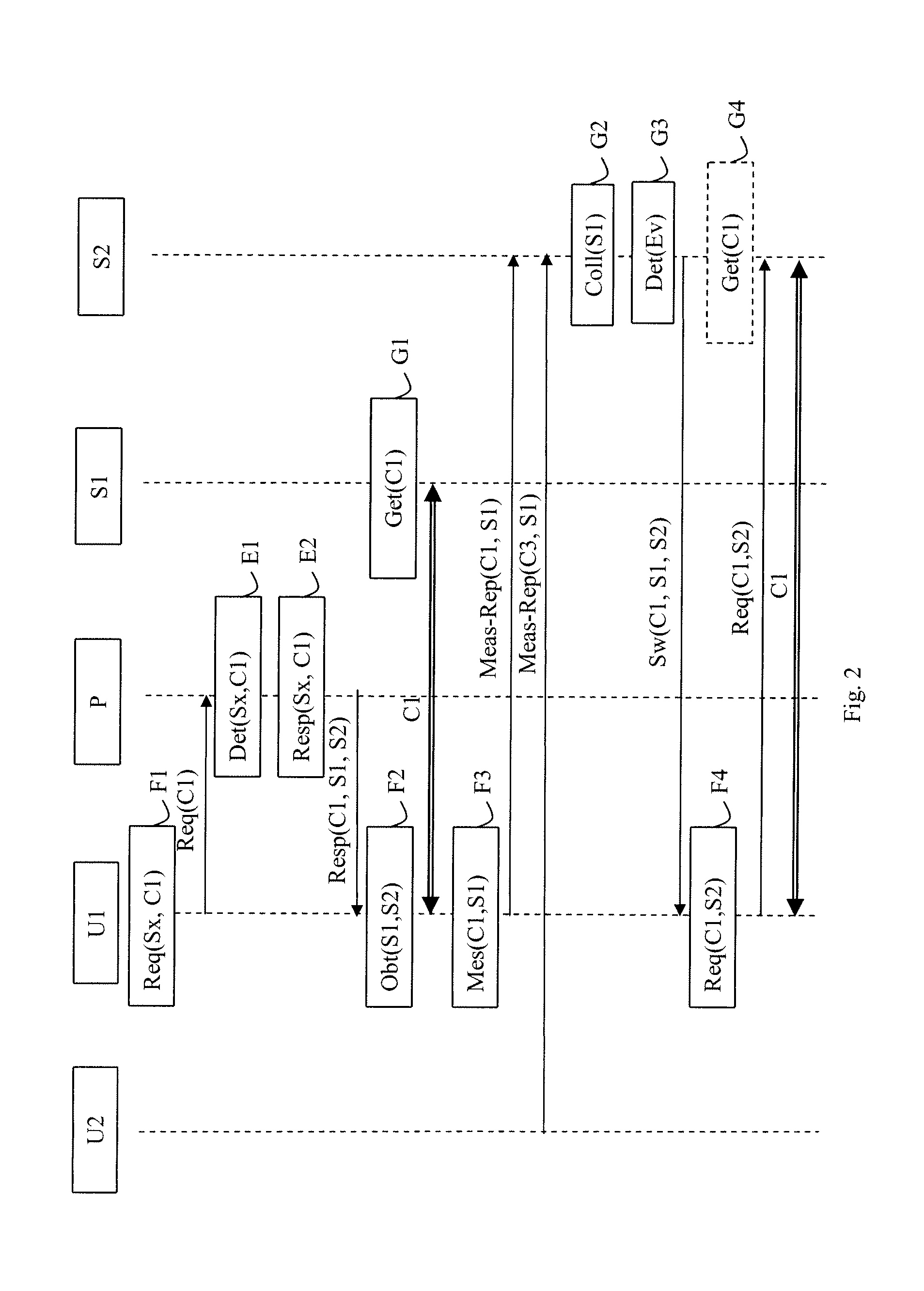Technique for delivering content to a user
- Summary
- Abstract
- Description
- Claims
- Application Information
AI Technical Summary
Benefits of technology
Problems solved by technology
Method used
Image
Examples
Embodiment Construction
[0043]The content-delivery system 1 in its environment is described with reference to FIG. 1 in a particular embodiment.
[0044]The content-delivery system 1 comprises a plurality of content-delivery servers, two of which, S1 and S2, are shown in FIG. 1, for distributing content to a plurality of users U1, U2. Below, the same reference is used both for a terminal and for the user of the terminal. The contents for delivery are shared over the content-delivery servers S1 and S2 and content servers S3, S4, S5. The delivery servers S1, S2 and the content servers S3, S4, S5 constitute a portion of a Content Delivery Network. A CDN network is constituted by servers connected as a network via a communications network of the Internet type or any other type of network, e.g. a mobile network. These servers co-operate in order to make multimedia content or data available to users. The servers co-operate with one another in order to satisfy requests issued by users for access to content or to dat...
PUM
 Login to View More
Login to View More Abstract
Description
Claims
Application Information
 Login to View More
Login to View More - R&D
- Intellectual Property
- Life Sciences
- Materials
- Tech Scout
- Unparalleled Data Quality
- Higher Quality Content
- 60% Fewer Hallucinations
Browse by: Latest US Patents, China's latest patents, Technical Efficacy Thesaurus, Application Domain, Technology Topic, Popular Technical Reports.
© 2025 PatSnap. All rights reserved.Legal|Privacy policy|Modern Slavery Act Transparency Statement|Sitemap|About US| Contact US: help@patsnap.com



